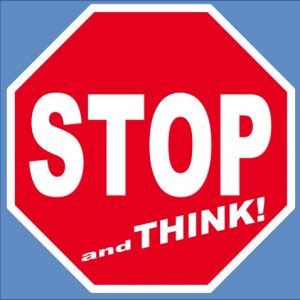
T. Westwood (2020)
In the paper, What Does the ‘Postdigital’ Mean for Education? Three Critical Perspectives on the Digital, with Implications for Educational Research and Practice (Knox, 2019), the author seeks to clarify what the term postdigital might mean. Knox suggests that the term be viewed as “a necessary juncture for reflection” (2019, p. 358). It is time to examine how digital technology is intertwined with social practices, economics, and politics. Is the human-technology relationship going to continue to march on or will push-back alter its course?
As an elementary school teacher, its difficult to view this as a separate era. We have long met resistance to the integration of digital technology in schools. It seems there are many teachers who like to stay the course once they have their programs sorted out. Just this week, our school got new computers installed and one teacher gasped in horror at the realization that the new machines no longer had dvd players. Fortunately, our administrator was ready with plug-in dvd players. Others don’t see digital technology as a priority except perhaps as an aid for struggling students. A study by Zaranis and Oikonomidis (2016) found that many teachers believe that arts and crafts, outdoor activities, and free play are more important to the development of young children than learning how to use technology. A few teachers still seem to fear it or have no desire to engage with digital technology. Some elementary teachers would never define the education they provide as digital while others might say they are somewhat. I would guess that only distance educators would say they offer an extensively digital education.
According to a study by Knauf (2016), parents are generally trusting of teachers’ judgement when granting access to digital tools and the internet. That said,I have experienced some mixed reactions from parents with regard to the internet. There was a period of great concern by our school’s Parent Advisory Council (PAC) over whether it was safe to have wifi in all areas of the school. For a few years, it was restricted to the library and the intermediate wing. This year, I had a parent that was alarmed that I had used a video to introduce our phonics program. To paraphrase, she asked, if I’m just going to show videos, what’s the point of sending her child to school?
I am curious to know where the high schools are in terms of digital technology use. My own three children just recently graduated from high school and the only one who seems to have good digital chops is the one who attributes his knowledge to YouTube. The other two are really great at Instagram and Snapchat. Actually, this is a good reason to reflect on digital education. Here these kids are with these powerful tools at their fingertips and what have they learned? They have learned how to Google, take selfies, post on social media, subscribe to music services, and watch Youtube and Netflix.
I remember when my children were young, we talked about protecting their identity while online but that was out of concern over child predators rather than curating their digital footprint. We talked about passwords but that was to stop siblings from messing with their stuff, or more accurately, to keep them from messing with mine. When social media came along, we talked about how they present themselves online. We have never talked about digital as capital.
Digital as Capital is a complicated notion for me. I have to admit, I am only beginning to understand the business of big data. Even though targeted advertisements while I am online are a bit creepy, I do not see any real harm in them. Where I see harm is where data is used to manipulate opinion like fake news on media sites like Facebook. I have become increasingly critical of claims I see on Facebook. I have linked many posts to Snopes in the hopes of making others critical as well, but to be honest, I have never investigated Snopes credibility either. There are still a lot of people who are believing everything they read and that is scary. Clearly, teaching students to be critical when online is important but is teaching them this enough? When parents are asked to sign that Google Apps for Education (GAFE) permission form in September, do they know they are making their child’s data available? I think this speaks again to Knauf’s findings that parents generally trust that teachers know what they are doing and are keeping children safe while online. Very few would think to question whether their child’s data is being commoditized or if there are alternatives to Google.
Knox’s second perspective is Digital as Policy. Do school districts get access to any of this data? How would they use it? They would have to pay someone to interpret it and with budgets so tight, would that happen? Will they be motivated by the possibility of “making educational activity more visible and efficient” (Knox, 2019, p. 364)? The priority right now appears to be making education as inexpensive as possible. Is the drive to use digital technology from big companies such as Google solely due to the fact that they are free for educational use? Will postdigital reflection cause districts to rethink privacy and back away from these data collecting companies? Is it true that some districts in BC already have? District administration and schools do get access to the data collected by the Foundation Skills Assessment (FSA) which they are careful to characterize as a “snapshot of learning” because the BC Teachers Federation (BCTF) has been very vocal in our opposition to it. Why are we opposed? I think mostly because it is flawed and because we do not really know how the data is being used, except the public ranking provided to the regional newspapers by the Fraser Institute. Perhaps teachers are also afraid the FSA data may be used to evaluate our teaching. However, if it is true that there are currently non-certified adults working as classroom teachers in BC right now, it would appear that school administrators are firmly in Beggars-Can’t-be-Choosers territory.
More disturbing for me than not knowing how educational data is being used, is Knox’s third perspective,
Digital as Material. Hopefully, more people are beginning to look at the social and environmental costs of digital technology. This week, one of our support staff handed me an old iPad hoping we could use it to benefit a particular student. I plugged it in and tried to update it. Even though it looked like it was in perfect condition, I could not update it past iOS 5. As a consequence, I could not find a single app that would work for the student. It was infuriating that Apple would create something so expensive and allow it to become obsolete. That a device probably made for a few bucks in the “questionable manufacturing conditions in China”(Knox, 2019,p. 366) should be considered disposable is upsetting, especially in a time when we are trying to be more environmentally responsible. Especially when educators are arguing that open education could be the key to social justice in the world and yet, people and the environment suffer in the creation of the accompanying digital tools (Funes & Mackness, 2018)
What do I do with this information? As an elementary school teacher, it is important that I be worthy of parents’ trust. I need to know more about how student data is being collected and used. I need to learn more about how to make the most ethically responsible choices I can when it comes to digital tools. I would like to say I need to teach my students about the global ethics around digital technology but that is too steep a subject for kindergarten. I can teach them how to treat digital tools with care, how to use them until they are unusable, and how to recycle them. I can encourage my high school colleagues to raise the ethics question with their students. I need to share what I know and help others engage in postdigital reflection. I need to add my voice to those who would ask for greater accountability from businesses that profit from digital education.
References
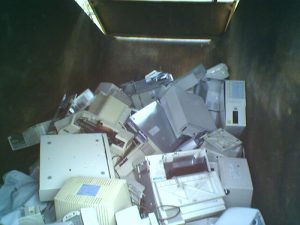

 for Kindergarten to Grade 9, one of the speakers points out that a “home facilitator” is necessary and, “If you’re looking less for home schooling but you’re more for schooling at home then SIDES might be a really good fit for you.” The other speaker adds that, “If you’re one of those parents that can find the teachable moments and you take advantage of them…SIDES is a definitely good fit for you,” plus “SIDES parents…have a different mindset and they want that involvement.” This implies that the success of the student relies on the mindset and involvement of the “home facilitator” and that, if the student is ultimately unsuccessful, it may be because the program was not a good fit. It does not appear that the program is in any way customized for the learner, other than offering some flexibility in the pacing and some tutoring available. I wonder if their is an asynchronous meeting space for the “home facilitators” to share their ideas and experiences. In naming the parents home facilitators and recognizing they are responsible for catching the teachable moments, it seems the SIDES teachers would also concede that they share the
for Kindergarten to Grade 9, one of the speakers points out that a “home facilitator” is necessary and, “If you’re looking less for home schooling but you’re more for schooling at home then SIDES might be a really good fit for you.” The other speaker adds that, “If you’re one of those parents that can find the teachable moments and you take advantage of them…SIDES is a definitely good fit for you,” plus “SIDES parents…have a different mindset and they want that involvement.” This implies that the success of the student relies on the mindset and involvement of the “home facilitator” and that, if the student is ultimately unsuccessful, it may be because the program was not a good fit. It does not appear that the program is in any way customized for the learner, other than offering some flexibility in the pacing and some tutoring available. I wonder if their is an asynchronous meeting space for the “home facilitators” to share their ideas and experiences. In naming the parents home facilitators and recognizing they are responsible for catching the teachable moments, it seems the SIDES teachers would also concede that they share the 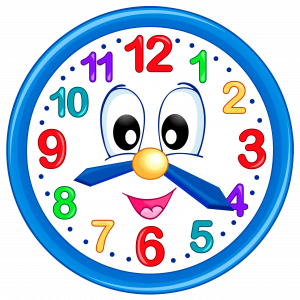
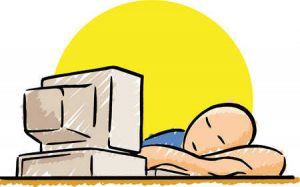
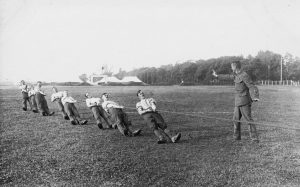

Recent Comments